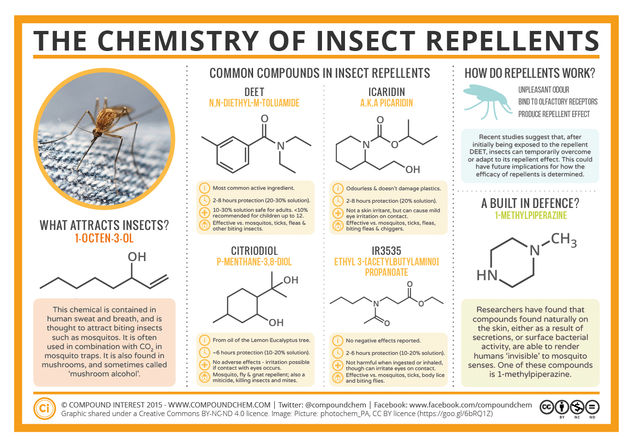© Compound InterestThe Chemistry of Insect Repellents
With summer approaching, so too approaches the time to stock up on repellents for the seasonal onslaught of insects hungry for human blood. There are a number of different chemicals that are responsible for the repellent effects of the various sprays or creams available – and chemistry can also offer possible explanations for why some people are just that much more attractive to the humble mosquito than others.
Firstly, it’s worth considering what it is that makes humans so alluring to mosquitos and the like. 1-octen-3-ol is the compound to blame – it’s present in human sweat and breath, and acts as an insect attractant. It’s so potent in this regard that it’s used in insect traps to lure in their unsuspecting prey. Interestingly, it’s more commonly referred to as ‘mushroom alcohol’, as a particularly optical isomer of this compound is produced by mushrooms and considered largely responsible for their aroma and flavour.
In terms of repellents, there are a wide range of both natural and synthetic compounds that exhibit insect-repelling activity, but in the EU and the US, there are four main compounds that are approved for use: DEET, Icaridin, Citrioldiol, and IR3535. Each of these differ slightly in their effectiveness and characteristics, but all of them work in a similar way, by producing an odour that insects find repulsive.







